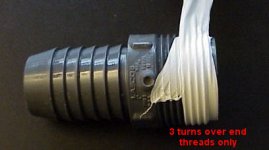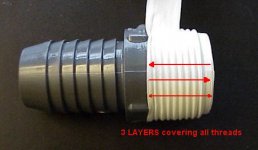I've already got a lot of threaded fittings for a new closed loop system I'm ready to put together. However, in order to minimize potential leaks, now I've decided I really want to have glued joints instead of threaded in certain areas. Is it stupid to glue threaded fittings together? Or do I really have to get slip fittings?
Some of the places I originally had threaded fittings planned are really hard to get to. If the thread leaked, it'd be almost impossible to get to in order to tighten. Originally I thought it threaded joints would make disassembly and later refinements easier. Now I realize if I couldn't get to them to tighten once put together, I wouldn't be able to loosen them either. duh!
Thanks,
Hal
_________________
Protection and indemnity insurance Forum
Some of the places I originally had threaded fittings planned are really hard to get to. If the thread leaked, it'd be almost impossible to get to in order to tighten. Originally I thought it threaded joints would make disassembly and later refinements easier. Now I realize if I couldn't get to them to tighten once put together, I wouldn't be able to loosen them either. duh!
Thanks,
Hal
_________________
Protection and indemnity insurance Forum







